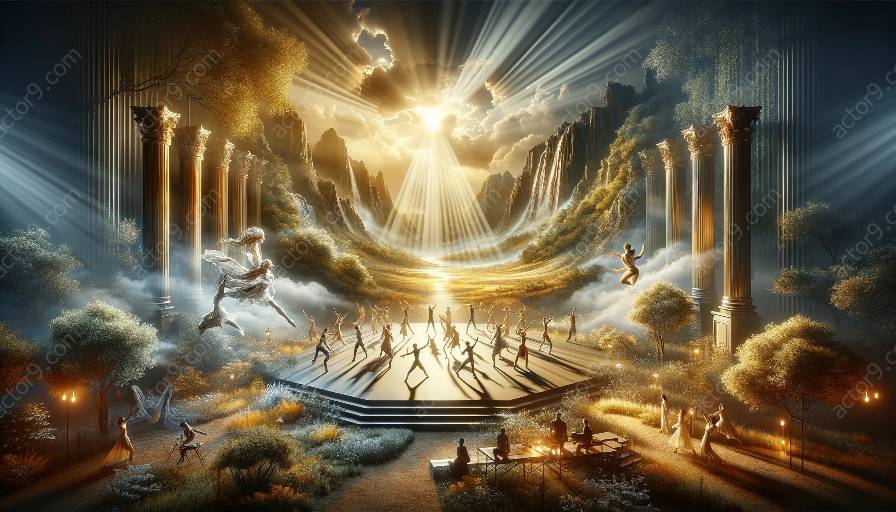Physical theatre is a dynamic art form that utilizes the body as the primary means of expression. Lighting plays a crucial role in enhancing the impact of physical theatre performances by interacting with costumes and set design to create a captivating visual and emotional experience.
The Role of Lighting in Physical Theatre
Lighting in physical theatre is much more than just illuminating the stage. It is an integral part of the storytelling process and a powerful tool for creating atmosphere, conveying emotions, and guiding the audience's focus. The interaction between lighting, costumes, and set design is essential in shaping the overall aesthetic and conveying the narrative of the performance.
Impact on Creating Atmosphere
Lighting is instrumental in setting the mood and atmosphere of a physical theatre production. By using different color temperatures, intensity levels, and lighting angles, designers can evoke a wide range of emotions and create a sensory experience for the audience. Whether it's a bright and energetic scene or a dark and mysterious moment, lighting works in harmony with costumes and set design to transport the audience into the world of the performance.
Conveying Emotions
Costumes and set design help to establish the visual aesthetic of a production, but it is the lighting that breathes life into them. Dynamic lighting changes can amplify the emotional impact of a performance, emphasizing the tension, joy, or despair portrayed by the actors. Through strategic lighting choices, designers can accentuate the intricacies of the costumes and set design, drawing the audience deeper into the narrative and the characters' experiences.
Enhancing Movement and Spatial Dynamics
Lighting design is also crucial in physical theatre for accentuating movement and spatial dynamics. By manipulating light and shadow, designers can emphasize the performers' actions, create depth, and transform the stage into dynamic landscapes. The interplay between lighting, costumes, and set design adds a layer of visual complexity to the performance, enhancing the audience's perception of the physical space and the interactions within it.
Integration of Technical and Artistic Elements
At its core, physical theatre is a fusion of technical precision and artistic expression. Lighting serves as the bridge between these elements, seamlessly integrating the technical requirements of the performance with the artistic vision of the creators. It collaborates with costumes and set design to enhance the visual narrative, create striking tableaus, and guide the audience's attention with subtlety and grace.
Conclusion
In physical theatre, the interaction of lighting with costumes and set design is an intricate dance that enriches the overall impact of the performance. Through the strategic use of lighting techniques, designers have the power to shape the audience's perception, heighten emotional resonance, and elevate the visual storytelling. The harmonious integration of lighting with costumes and set design is essential in creating a compelling and immersive experience that resonates long after the curtain falls.




































